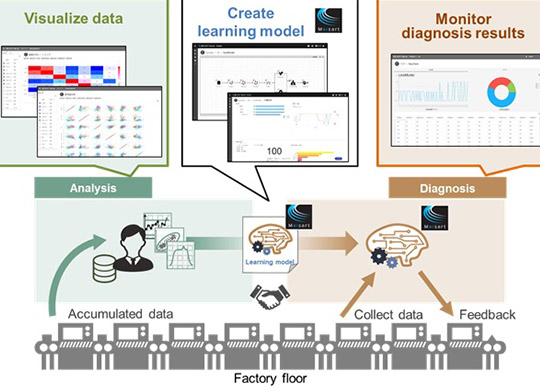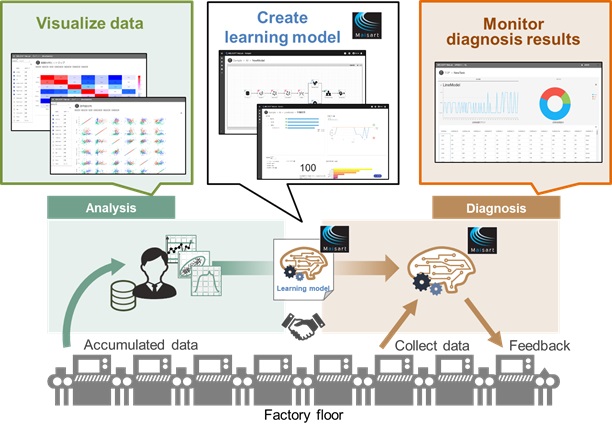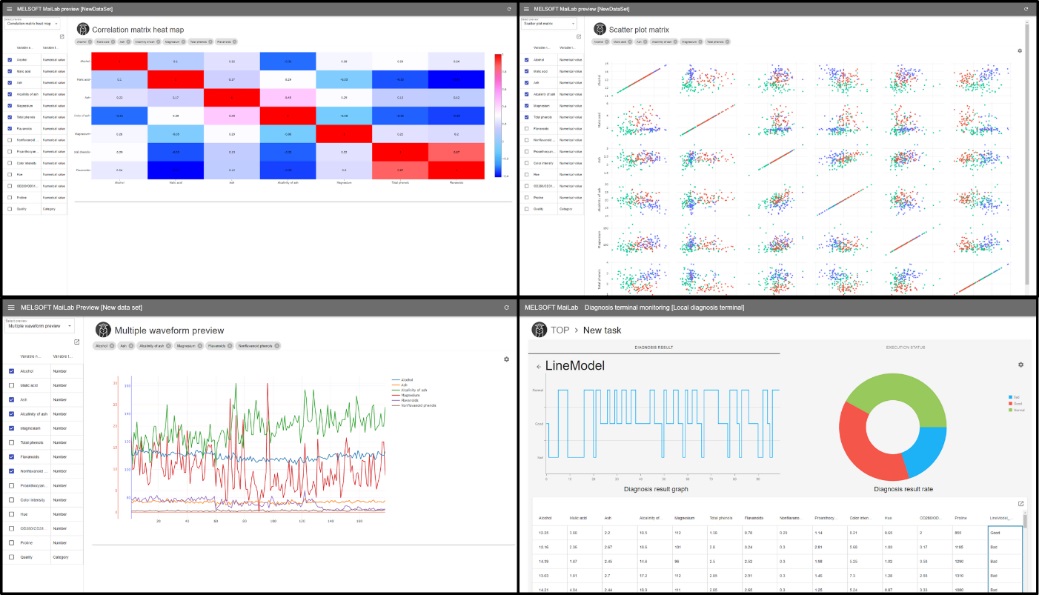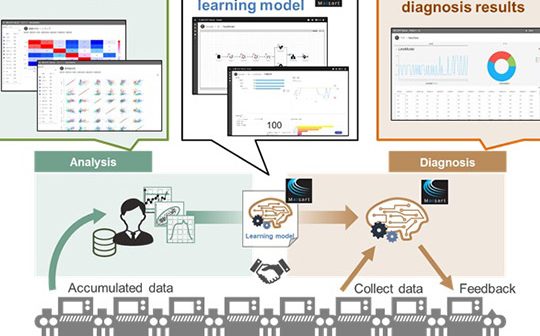
Mitsubishi Electric has announced it will launch MELSOFT MaiLab, a data-science tool that uses the company’s Maisart AI technology to enable non-specialists to skillfully and easily analyze and diagnose factory data such as current and pressure values for intuitive, high-level management of production operations.
In recent years, manufacturers are increasing the use of various data from the factory floor to further enhance productivity, which is stimulating needs for data collection and visualization as well as advanced analysis and diagnosis. On the other hand, a number of factory operations like production management and equipment maintenance still need to be handled by human workers, making tasks such as equipment adjustments and consumables-replacement timing, etc. dependent on the experience of skilled workers. The lack of such skilled workers, however, is becoming a critical issue for manufacturers when they try to promote advanced data analysis and diagnosis.

MELSOFT MaiLab enables non-specialists to perform expert-level factory-data analysis and intuitive production management Mitsubishi Electric’s MELSOFT MaiLab tool utilizes AI technologies like deep learning and other statistical methods to automatically learn how skilled workers evaluate operations, which enable this tool to be handled very easily without requiring any special knowledge of factory operations.
After the automatic learning process, the analysis and diagnosis results will be fed back from MELSOFT MaiLab for adjusting equipment parameters, which helps manufacturers automatically
improve their operations and further increase productivity. Going forward, the tool’s functionality and AI technologies incorporated will be updated in response to the growing needs of manufacturers.
KEY FEATURES
1) Automated learning process allows non-specialists to analyze and diagnose production data for improved productivity
– Automated machine learning (AutoML), an AI automated-learning function, realizes data analysis and diagnosis and gives automatic feedback to equipment for improved productivity without requiring users to possess data-analysis expertise.
– The AI generates learning models to help inexperienced workers perform equipment adjustments at similar levels as specialists by monitoring factory data and how skilled workers evaluate operations to adjust the parameters in production equipment.
2) Supports intuitive operation and easy analysis/diagnostics with rich graphic displays
– Various graphs like correlation matrix heat maps and scatter plot matrix are available to visualize factory data, supporting intuitive operation and easy data analysis.
– Results of the AI diagnosis can be shown as bar graphs and pie charts for intuitive understanding. – Tablets can be used to check production status remotely.







